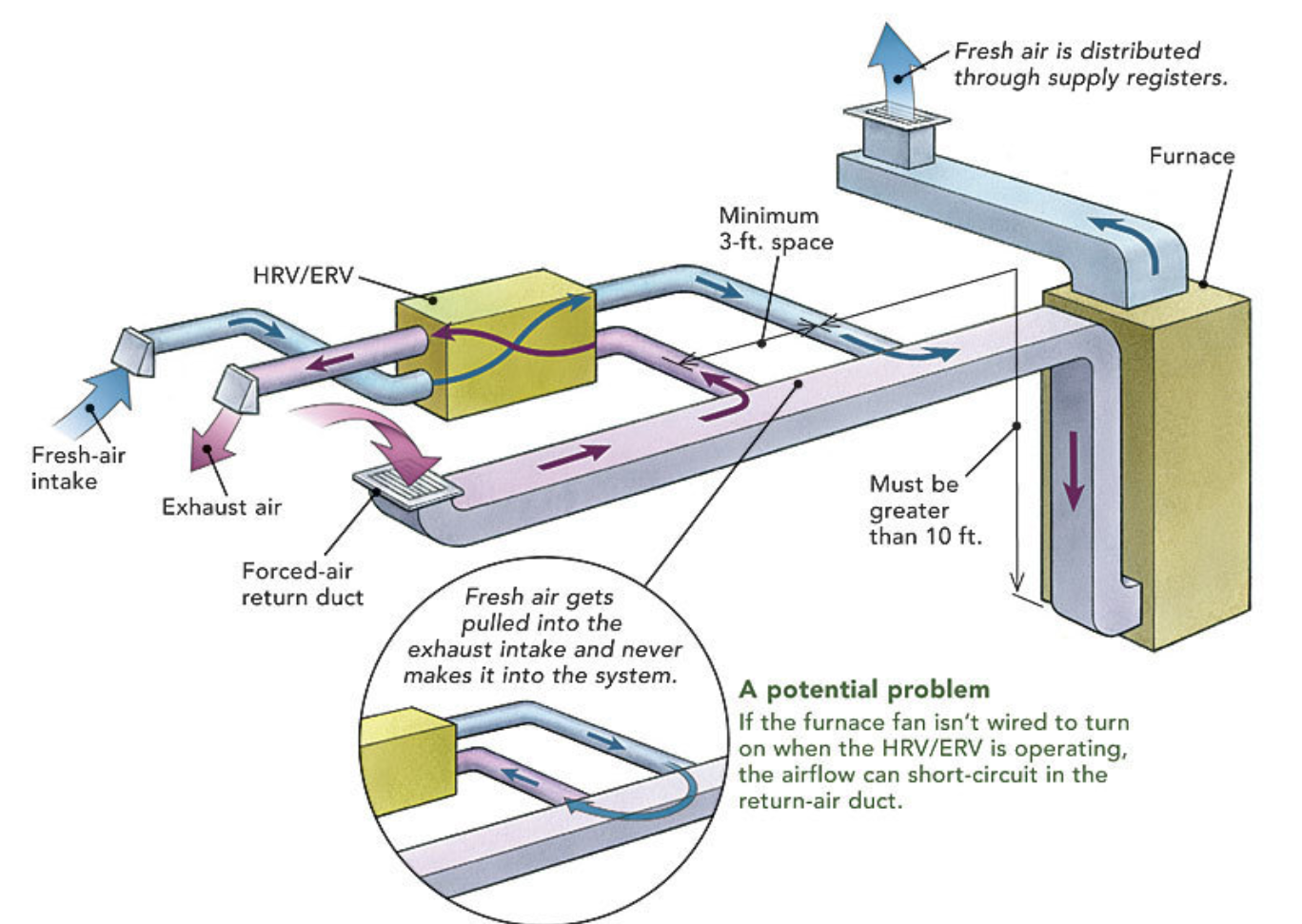MikeAqua:
tweake:
a tad odd to have a separate bath system, unless it could not be plumbed into the other system. or they just wanted to sell more stuff.
one of the problems doing a separate system is that you need make up air, especially if the fan is upgraded. some ventilation systems have that option and will boost incoming airflow when the bath fan gets turned on (or stove hood). but generally its cheaper and gets better results, to just use the bath room as one of the ventilation exhausts.
sorry i may have gotten my wires crossed here. depends on if you have HRV core or ERV core. HRV keeps inside heat in and outside heat out. ERV keeps inside heat and humidity in and outdoor heat and humidity out. the downside of the ERV is because it keeps that moisture in, it can build up to danger levels. this is also why its important to know what core they sold/installed.
I wanted the bathroom system set up that way. Simpler. The house was a 1950s and 1970s build so not air-tight and easy to draw make-up air.
The core was an air-to-air heat exchanger. Cold dry air sucked in and warm wet are sucked out with transfer of most heat from outgoing to incoming air. Worked well enough to justify the investment. Humidity would stabilise at ambient or below if we were running heat pumps in cooling mode.
sounds like HRV core.
however with a non air tight house they are typically not worth it. pretty rare, tho not impossible, for older homes to be air tight enough for them to work well.



